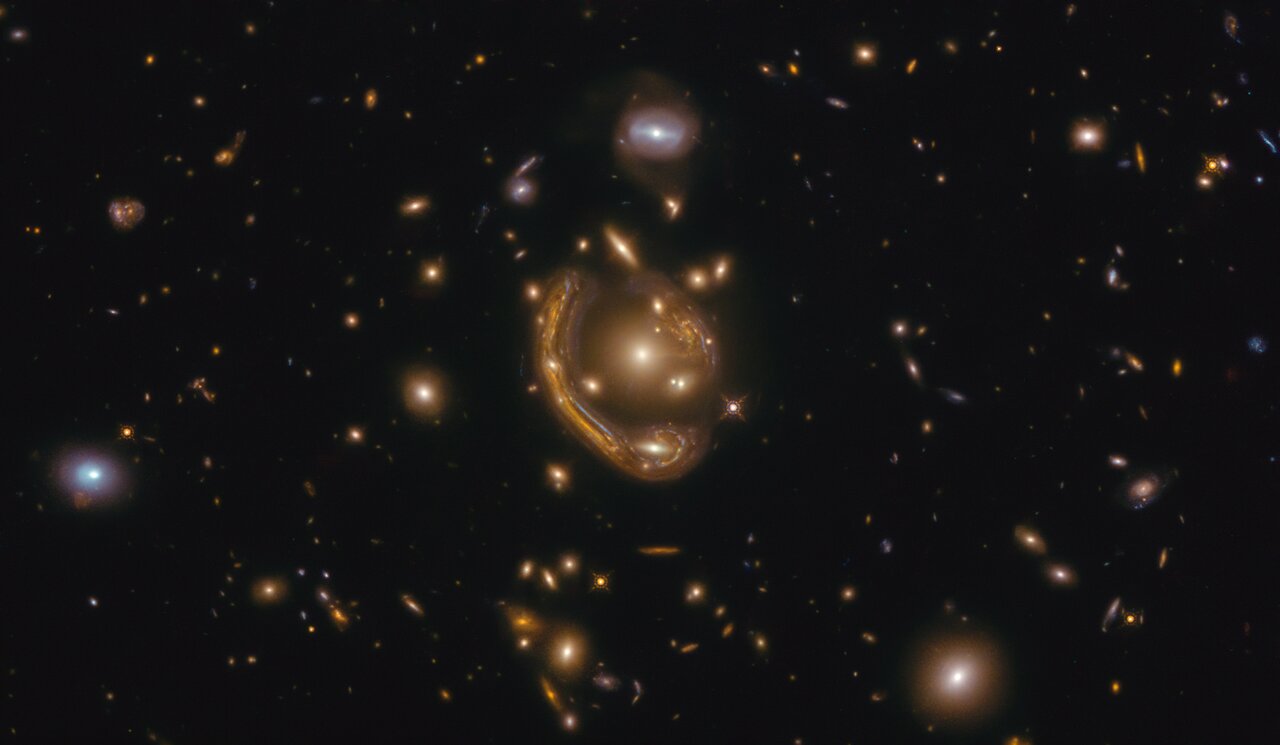Gravitational lensing is a concept where dark matter distorts space revealing its presence through its interaction with light. ESA’s Euclid mission is mapping out the gravitational lensing events to chart the large scale structure of the Universe. Euclid is also expected to discover in excess of 170,000 strong gravitational lensing features too. AI is expected to help achieve this goal but machine learning is still in its infancy so human beings are likely to have to confirm each lens candidate.
Continue reading “Euclid Could Find 170,000 Strong Gravitational Lenses”This Might Be the Best Gravitational Lens Ever Found
A gravitational lens is the ultimate funhouse mirror of the Universe. It distorts the view of objects behind them but also supplies amazing information about distant galaxies and quasars. Astronomers using Hubble Space Telescope (HST) recently released a new image of one of these weird apparitions called “The Carousel Lens”. It’s a rare alignment of seven background galaxies that all appear distorted by an intervening galaxy cluster.
Continue reading “This Might Be the Best Gravitational Lens Ever Found”Another Strike Against Primordial Black Holes as an Explanation for Dark Matter

The quest to understand dark matter has taken many twists and turns. It’s a scientific tale but also a human one. We know there’s a missing mass problem, but astrophysicists and cosmologists can’t figure out what the missing matter is. One of the most interesting potential solutions is primordial black holes (PBHs).
However, new research suggests that PBHs can only make up a small portion of dark matter if any at all.
Continue reading “Another Strike Against Primordial Black Holes as an Explanation for Dark Matter”Gravitational Lenses Could Pin Down Black Hole Mergers with Unprecedented Accuracy
Gravitational wave astronomy has been one of the hottest new types of astronomy ever since the LIGO consortium officially detected the first gravitational wave (GW) back in 2016. Astronomers were excited about the number of new questions that could be answered using this sensing technique that had never been considered before. But a lot of the nuance of the GWs that LIGO and other detectors have found in the 90 gravitational wave candidates they have found since 2016 is lost.
Researchers have a hard time determining which galaxy a gravitational wave comes from. But now, a new paper from researchers in the Netherlands has a strategy and developed some simulations that could help narrow down the search for the birthplace of GWs. To do so, they use another darling of astronomers everywhere—gravitational lensing.
Continue reading “Gravitational Lenses Could Pin Down Black Hole Mergers with Unprecedented Accuracy”Formation-Flying Spacecraft Could Probe the Solar System for New Physics
It’s an exciting time for the fields of astronomy, astrophysics, and cosmology. Thanks to cutting-edge observatories, instruments, and new techniques, scientists are getting closer to experimentally verifying theories that remain largely untested. These theories address some of the most pressing questions scientists have about the Universe and the physical laws governing it – like the nature of gravity, Dark Matter, and Dark Energy. For decades, scientists have postulated that either there is additional physics at work or that our predominant cosmological model needs to be revised.
While the investigation into the existence and nature of Dark Matter and Dark Energy is ongoing, there are also attempts to resolve these mysteries with the possible existence of new physics. In a recent paper, a team of NASA researchers proposed how spacecraft could search for evidence of additional physical within our Solar Systems. This search, they argue, would be assisted by the spacecraft flying in a tetrahedral formation and using interferometers. Such a mission could help resolve a cosmological mystery that has eluded scientists for over half a century.
Continue reading “Formation-Flying Spacecraft Could Probe the Solar System for New Physics”Gravitationally Lensed Supernovae are Another Way to Measure the Expansion of the Universe
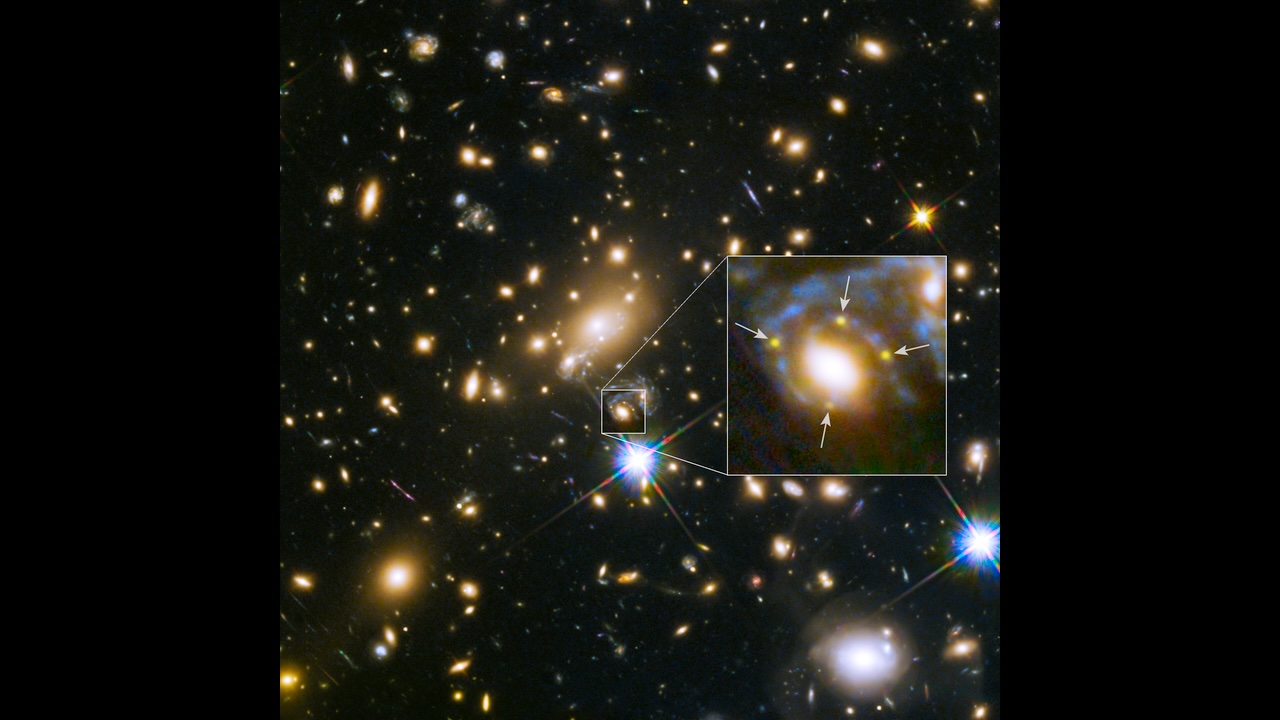
Supernova are a fascinating phenomenon and have taught us much about the evolution of stars. The upcoming Nancy Grace Roman telescope will be hunting the elusive combination of supernovae in a gravitational lens system. With its observing field 200 times that of Hubble it stands a much greater chance of success. If sufficient lensed supernovae are found then they could be used to determine the expansion rate of the Universe.
Continue reading “Gravitationally Lensed Supernovae are Another Way to Measure the Expansion of the Universe”Another Example of a Fantastic Einstein Ring
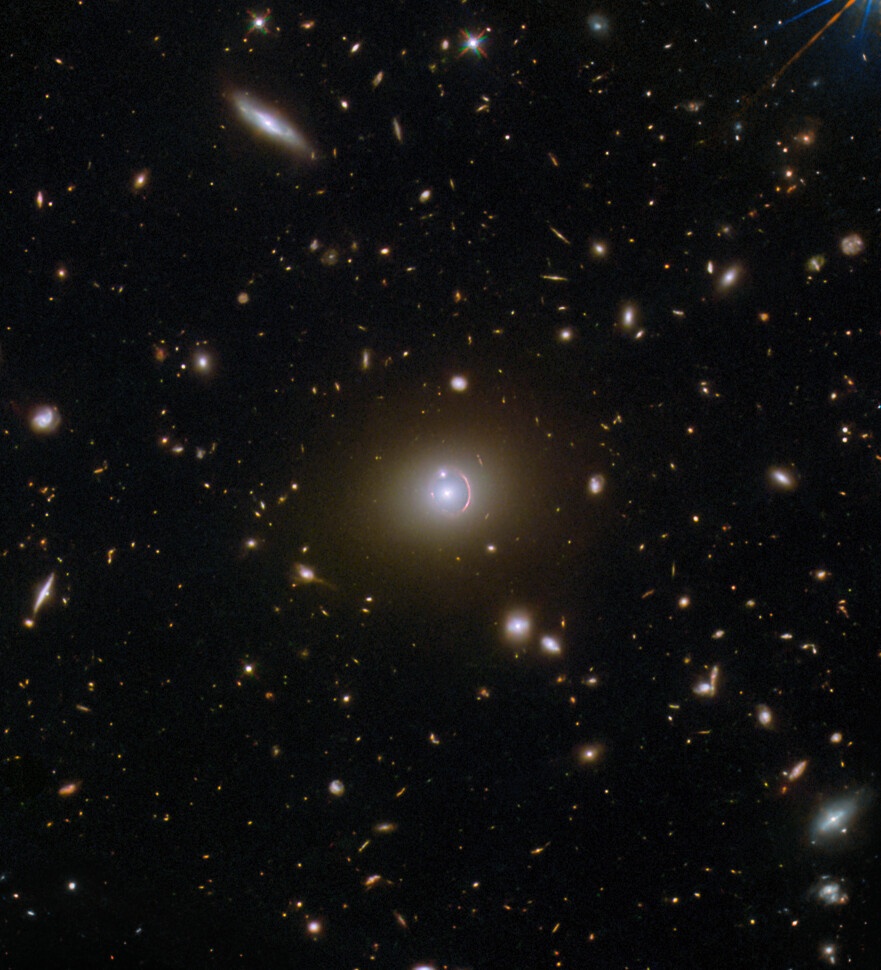
The most evocative astronomy images take us across space and time to stars and galaxies billions of light-years away. Nestled at the center of this one, taken by the Hubble Space Telescope, is a collection of three galaxies. They’re not all that close together, although they appear to be in this image. What’s fascinating about this image is that it’s a fine example of an Einstein gravitational ring—and its discovery was enabled by members of the public!
Continue reading “Another Example of a Fantastic Einstein Ring”An Epic Collaboration Between Hubble and JWST
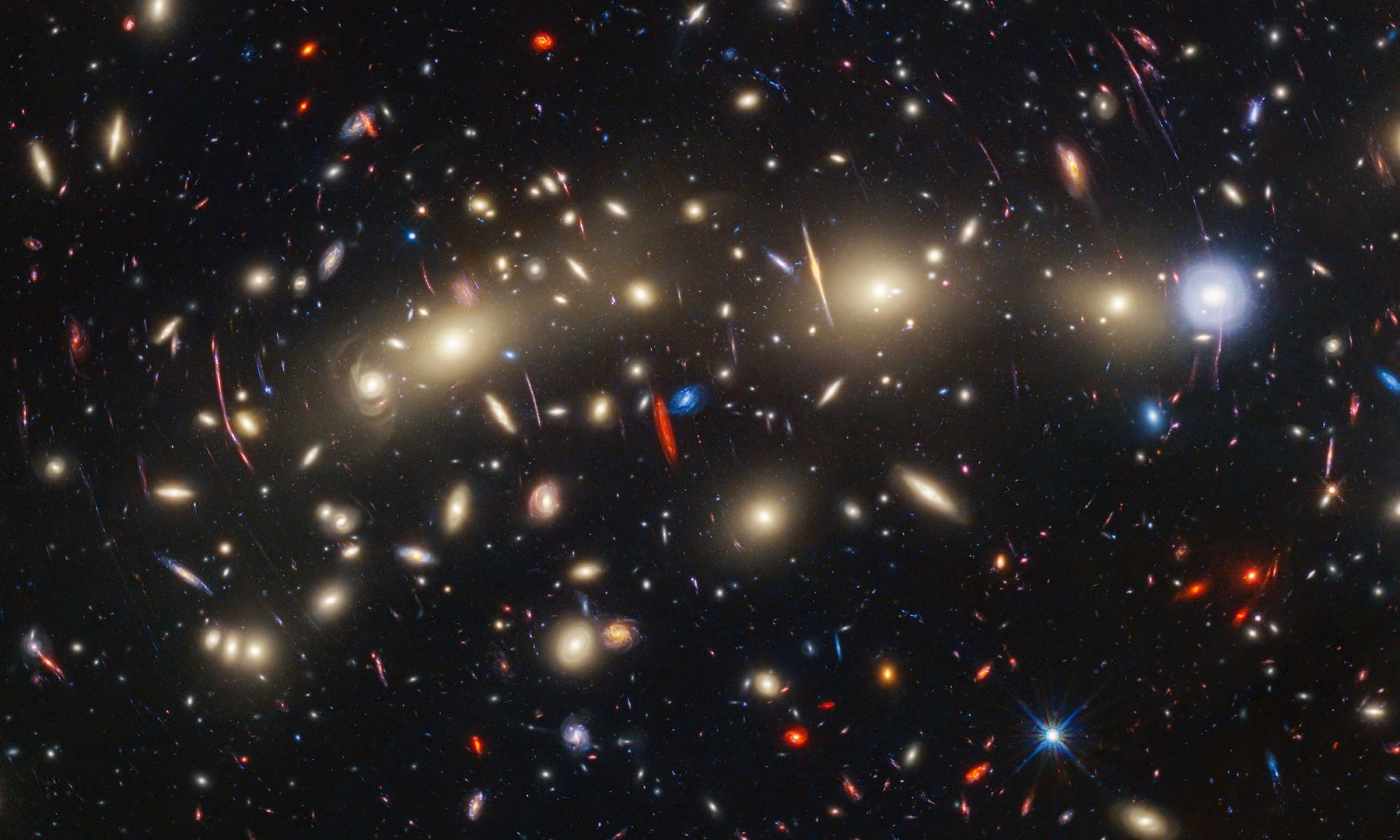
In 2012, as part of the MAssive Cluster Survey (MACS), the Hubble Space Telescope (HST) discovered a pair of colliding galaxy clusters (MACS0416) that will eventually combine to form an even bigger cluster. Located about 4.3 billion light-years from Earth, the MACS0416 cluster contains multiple gravitational lenses that allow astronomers to look back in time and view galaxies as they appeared when the Universe was young. In a new collaboration that symbolizes the passing of the torch, the venerable Hubble and the James Webb Space Telescope (JWST) teamed up to conduct an extremely detailed study of MACS0416.
Continue reading “An Epic Collaboration Between Hubble and JWST”Civilizations Could Use Gravitational Lenses to Transmit Power From Star to Star
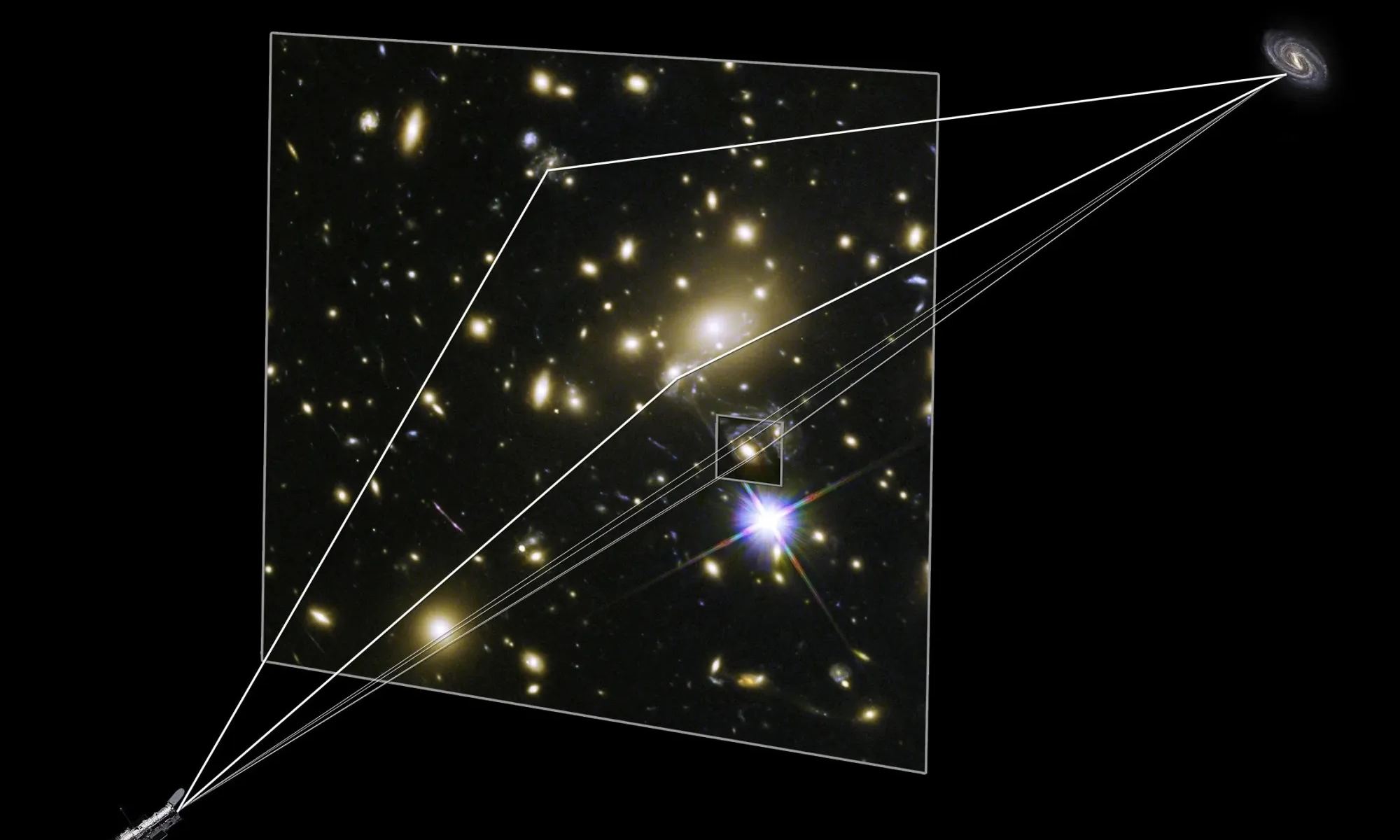
In 1916, famed theoretical physicist Albert Einstein put the finishing touches on his Theory of General Relativity, a geometric theory for how gravity alters the curvature of spacetime. The revolutionary theory remains foundational to our models of how the Universe formed and evolved. One of the many things GR predicted was what is known as gravitational lenses, where objects with massive gravitational fields will distort and magnify light coming from more distant objects. Astronomers have used lenses to conduct deep-field observations and see farther into space.
In recent years, scientists like Claudio Maccone and Slava Turyshev have explored how using our Sun as a Solar Gravity Lens (SGL) could have tremendous applications for astronomy and the Search for Extratterstiral Intelligence (SETI). Two notable examples include studying exoplanets in extreme detail or creating an interstellar communication network (a “galactic internet”). In a recent paper, Turyshev proposes how advanced civilizations could use stellar gravitational lenses to transmit power from star to star – a possibility that could have significant implications in our search for technosignatures.
Continue reading “Civilizations Could Use Gravitational Lenses to Transmit Power From Star to Star”Can There Be Double Gravitational Lenses?
If you, like me, have used telescopes to gaze out at the wonders of the Universe, then you too may have been a little captivated by the topic of gravitational lensing. Think about it: how cool is it that the very universe we are trying to explore is actually providing us with telescopes to probe the darkest corners of space and time?
The alignment of large clusters of galaxies is the usual culprit whose gravity bends distant light to give us nature’s own telescopes, but now part-time theoretical physicist Viktor T Toth poses the question, “Can there be multiple gravitational lenses lined up and can they provide a ‘communication bridge’ to allow civilisations to communicate?”
Continue reading “Can There Be Double Gravitational Lenses?”




